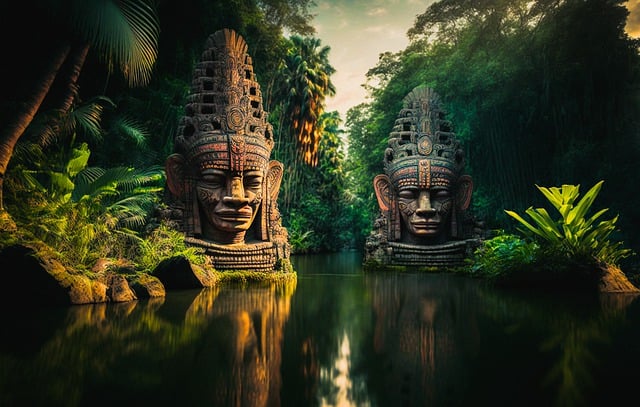Up to their collapse around 1200 C.E., the Toltec peoples controlled a large portion of Central America. The resulting power vacuum occurred at the same time as the northern nomadic tribes arrived. People from Aztlan, or the Aztecs, were the name given to one tribe. They landed in a valley in central Mexico and submitted to whichever force was able to establish transient control. The Aztecs eventually relocated to the western shore of Lake Texcoco, where they adapted to the custom of creating "floating gardens" out of built-up silt. In the middle of the fourteenth century, they founded Tenochtitlan; a second city, Tlatelolco, was constructed by a second Aztec party. Tenochtitlan and Culhuacan were chosen as the protectors of the two cities, respectively.
The Tepanecs controlled the valley through the latter part of the fourteenth century, when they also extended their dominance beyond the mountains to the west, covering an area of perhaps 50,000 square kilometers. The Tepanec monarch Tezozomoc encouraged this unification, but following his death in 1423, the numerous city-states started to rebel. To take the position of the Tepanecs, three nations—among them the Tenochtitlan Aztecs—formed the Triple Alliance. Despite some disagreements here and there, the trio managed to get along reasonably well and rule central Mexico for 90 years. They established their control over the former Tepanec domain between 1431 and 1465, after which they started an expansionary phase.
For several reasons, the Aztecs took the lead in the expansion. Their main goals were to increase their trading opportunities and diversify their tax base by including the conquered populations. They fought over religious differences as well. The god of the sun, Huitzilopochtli, was one of the deities worshipped by the Aztecs. According to Aztec mythology, the sun's destruction signaled the end of each cycle in which history was said to have progressed. The god required sacrifices to eat in order to stay strong and radiant, and the Aztecs went conquest-hunting for sacrificial offerings. Tenochtitlan's towering pyramids were actually huge altars where prisoners of war were regularly put to death. Thousands would be sacrificed on days of exceptional celebration.
When they were in charge of their empire, the Aztecs developed and embellished Tenochtitlan. The city's population may have reached 200,000, making about one-fifth of the overall Aztec population; the estimated number of subject peoples increased the empire's population to six million. The capital city's layout was logically organized, with straight streets and numerous canals where trade was conducted by boat. The Aztec empire was already well-established when Montezuma II assumed power in 1502, and he was largely responsible for the opulent architecture and ornamentation of the capital. Their sister-city, Tlatelolco, which they conquered in 1475, developed into a commercial hub with Central America's largest market.
All the subject people, however, developed hatred due to the ongoing need for sacrificed victims, and when the Spaniards arrived, they had no trouble securing supporters to help them in their assaults on the Aztec Empire. Although the Aztecs were technologically more accomplished than the Europeans in many areas, they lacked the weapons and disease resistance required to drive out their invaders. They had produced incredible works of art and a sophisticated hieroglyphic writing system, but their understanding of science was quite restricted. It is doubtful how long the tribes of Central America would have tolerated the Aztecs' political hegemony and religious traditions even if the Spaniards had never arrived.

References:
Berdan, Frances, The Aztecs of Central
Mexico (New York: Holt, Rinehart & Winston,
1981); Canasco, David, Moctezuma’s Mexico
(Niwot: University Press of Colorado, 1992);
Henderson, Keith, The Fall of the Aztec Empire
(Denver: Denver Museum of Natural History,
1993).
Posted using Proof of Brain


